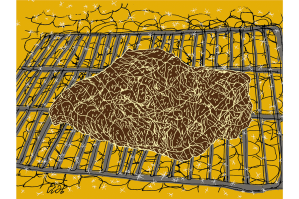For those of us with a poor grasp of time, who can still recall when a night at the bar could be sharply revisited by a Proustian wave of stale smoke arising from yesterday’s clothes, it can almost feel as if vaping crept up on us out of nowhere. One moment, it seemed, all the authorities had firmly agreed that pushing for vaping was creepy, and were pledging to legislate and tax cigarettes into oblivion; the next, great hordes of schoolchildren were apparently free to suck constantly on little vials of liquid nicotine with sugar-rush names such as Cherry Fizzle and Blue Razz Lemonade.
What happened? Regulators and legislators seem to have hung up a metaphorical “gone fishin” sign while Chinese vape factories cranked into overdrive, churning out boxes of sweet jitter juice marked “for export only.” Even in Britain, Rishi Sunak’s much-vaunted Tobacco and Vapes Bill, which planned to place greater restrictions on the sale of vapes in the UK, has temporarily vanished with the general election. To understand how we got here, it’s worth listening to Backfired: The Vaping Wars, in which the hosts Leon Neyfakh and Arielle Pardes chart the evolution of the technology and the habit in the US.
It began with defensible intentions. Two Stanford students, James Monsees and Adam Bowen, both cigarette smokers, set out to design a product that helped people like them to give up tobacco. They wanted to retain the ritual of smoking without the excessive health risks. Work began on a prototype vape which eventually evolved into “Juul,” the first e-cigarette to hit the mass market. As the cash mounted, the moral rot set in. Since the new e-cigarette inhabited a murky regulatory zone, it was not subject to the same restrictions as tobacco products, something Juul rapidly capitalized on with vape flavors such as mango and crème brûlée. The company then launched an advertising campaign featuring cool young people, some looking so tender in years that they worried the more ethical staff. It was a roaring success. Sales rocketed, not least among the young. “Juuling” even became a verb.
Parents and public health experts began to take notice, agitating for a ban, and thereafter the story of regulators and vapes has been that of a cat-and-mouse game, albeit featuring a notably toothless and erratic cat. Donald Trump, at first swayed by parental outrage, seemed soon to realize that the targeted ire of disgruntled vapers could be more electorally damaging. A compromise was found in early 2020, offering a lorry-sized loophole: vapes with replaceable cartridges such as Juul were banned from offering a range of popular flavors, but disposable vapes could still do just that, with predictably disastrous results for public health and the environment. As Juul became mired in lawsuits, illegal imports of varying quality and strength poured in.
Pardes and Neyfakh, a confirmed and regretful vaper himself, are informative and genial hosts, delving into the detail of a sinuous history without becoming dull. Yet their portrait of a seemingly unstoppable industry makes me more anxious than it seems to make them. At the end, a medical expert on vaping emphasizes that it is useful for helping cigarette smokers to quit, but muses that “there’s a lot of unknowns” about long-term harm. “It’s the devil you know versus the devil you don’t know,” he says, equably. But as more medical studies raise concern over the dangerous effects of vapes, especially on developing brains and lungs, the latter devil seems to be flashing a little more of himself every day.
This article was originally published in The Spectator’s UK magazine. Subscribe to the World edition here.


























Leave a Reply